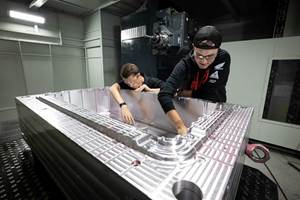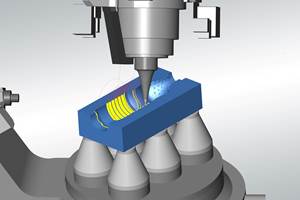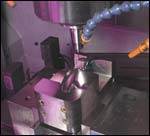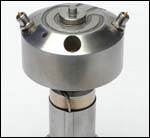Mold Builders Carve Lean Niche
Commodity-oriented consumer manufacturing left North America, but mold industry survivors are finding strong growth in technical market sectors.
Big-box retailers in the United States and Canada are booming, but also are driving manufacturing of low-cost consumer goods to offshore sources. By one estimate, up to 70 percent of everything sold at Wal-Mart comes from offshore, primarily China. More than 95 percent of all bicycle manufacturing is now offshore. If a consumer part is small and has embedded electronics, it’s probably gone.
“Commodity molds can be built in China or South Korea at literally half the cost,” says John Gravelle, owner and president of Mar-Lee Companies in Leominster, MA. “So obviously, that business is gone and will stay gone.”
But Gravelle and other moldmakers in North America have fashioned a new strategy based on lean manufacturing coupled with high technology approaches that could paint a growing business picture for the long-term.
Mold manufacturers, such as MSI Mold Builders of Cedar Rapids, IA, also are finding a niche with molds that make large parts for white goods or other consumer applications that can’t be shipped easily from Asia. Suppliers also are developing new productivity solutions that will boost efficiencies at those moldmakers that can invest.
Examples of exciting new consumer products that feature molds made by North American companies include:
- A tank box and air cover for the Buell Lightning City Cross sport motorcycle made with a single-cavity mold from CDM Tool of Hartford, WI. The cover and windscreen sparkles with a tinted transparent look, yet has to be rigid at high speeds. It was made with a new polycarbonate/polybutylene terephthalate blend that is chemical resistant and transparent, yet maintains rigidity.
- An eight-foot playground wave slide designed and molded by Ontario-based Horizon Plastics is an example of large, bulkier parts that are likely to remain close to end markets. The low-pressure structural foam tool made by MSI, Cedar Rapids, IA, was chosen for its strength and cost.
- A new Kubota garden tractor was designed in Japan and molded in North Carolina with tooling manufactured by Delta Tool in Charlotte, NC and CDM Tool in Hartford, WI. The single-cavity tools include molded-in texture. Polycarbonate and PC blends are used in the engine enclosure while lower cost glass-filled (15 to 20 percent) polypropylene is used for the cosmetic and other structural parts.
Leading moldmakers are dramatically improving efficiency and reducing costs through implementation of lean manufacturing practices and new business strategies.
Double-Digit Growth
“I’m optimistic about very specialized consumer products business,” comments Gravelle whose company has seen a rise in sales from $3 million in 1990 to $17 million last year. Mar-Lee began as a moldmaker in 1972 and now also does high-tech injection molding for the consumer products and medical markets. “We have actually intentionally given up more than $8 million of business in commodity-oriented consumer products molding and replaced it with specialized molding, such as lids for baby wipes containers.”
Gravelle wants customers who are willing to make long-term commitments. In return Mar-Lee develops a highly automated process that produces high-quality products. The cost of the tool becomes an insignificant part of the package because it’s amortized over a very large number of parts. In some cases, Mar-Lee even finances the molds it makes for its partner-customers. Materials costs are adjusted monthly based on a third-party index agreeable to both sides. Mar-Lee has now written a dozen long-term productivity contracts and is growing 12 to 15 percent a year. “We have an advantage because when we agree to a program, we buy whole new work cells,” Gravelle says. The lids for the baby wipes application are molded in an eight-cavity tool that features in-mold labeling. Gravelle says the quality is better and there is zero work in progress because of automation in the work cell.
“Molders who lost business offshore have a lot of existing equipment, and they are trying to utilize that equipment,” says Gravelle. “If a customer comes through the door, they will try to make it fit what they have. That’s not to the customer’s advantage. All of our jobs are now designed for that special project.”
Another big development at Mar-Lee is development of lean manufacturing processes. “We gained 10 to 20 percent improvements in efficiency when we introduced computer-operated machinery in the mold shop many years ago,” comments Gravelle. But there was still lost time and efficiency because parts were queuing up waiting for their turn. In the lean transformation at Mar-Lee, Gravelle is breaking down the barriers between the specialized departments.
“Now instead of having an EDM department, we’re putting that equipment into several cells and we’re making the equipment available to different teams.” One of the key components is worker flexibility. “We’re spending a lot of time training our people. If a person running an EDM is done and the next job is wire, he goes over to the wire machine and he starts running that job. You eliminate the batch and queue.”
The programming department also is moving down to the shop floor. “Before someone might have trouble machining a part and says there must be something wrong with the program,” says Gravelle. He takes it to engineering, but Bob says he’s busy and can’t touch it for two days. So everything waits. Now the guy who finds the problem fixes it.
The 35 employees in the Mar-Lee mold shop are involved in extensive year-long training, and are excited about the changes, says Gravelle.
Another moldmaker benefiting from a major move to lean is MSI Mold Builders, which also takes a strong technology tack and focuses on mid-size or large molds, often using niche processes, such as structural foam or gas assist.
“It’s really all about utilization of equipment and technology, such as having the five-axis kind of capability, and being able to decrease labor input,” comments Roger Klouda, president of MSI. “Anybody can buy technology, but you have to utilize 99 percent of it, not just the 10 to 15 percent that most people do. Besides maximizing labor, you also have to maximize overhead. If you don’t have your overhead under control, you are still going to lose.” (For a detailed description of MSI’s move to lean, see “MSI Mold Builders: Moldmaking Measured and Defined” by Sherry L, Baranek, MoldMaking Technology, March, 2006.)
But surviving in the consumer goods market is not just a story about technology. The playground slide, which earned an award at a structural plastics conference last year, is a case in point. “You’re looking at large pieces that are expensive to ship. There are economies in keeping the bigger tools for the bigger parts here,” comments Klouda. Another spin: the slide tool was made with aluminum, which Klouda says is very expensive in China.
MSI’s historic embrace of structural foam gives the firm a head start on keeping larger part mold manufacturing. Now the company also has developed an expertise in gas-assist tools, which tend to be used for larger structural parts where cosmetics can be an issue.
“Gas assist really requires a close working relationship with the molders because it’s still a new technology,” comments Klouda. “We spend a lot of time changing and changing throughout the construction process.” Issues under consideration include exactly what the gas routes will be, gating, pins, and so forth. “We can compete there because you can’t really go overseas and do it as well as you can do it here.”
Dreaded Words: The China Price
That new albatross, “The China Price,” still dogs mold manufacturers like MSI, however.
“The other thing that gets thrown at us is ‘You have to be competitive with the Chinese price even though we’re not going there,’” says Klouda. The threat is always there to take the mold to Asia. As a result, MSI has to keep a close eye on the China price and make sure its quote is within 25 percent of the Asian market.
Yet another way to beat the China is to manufacture mind-blowing molds. CDM Tool & Manufacturing of Hartford, WI, built a mold for a new Herman Miller office chair called the Celle that features a matrix of more than 1,500 pliable polyester “cells” and loops that respond to the body’s movements. The design by Jerome Caruso is based loosely on the idea of the ventilation and comfort provided by beaded seats sometimes used by taxi drivers.
“At the beginning,” recalls Caruso, one of America’s most celebrated industrial designers, “I imagined a highly engineered, ‘intelligent’ surface that could be the ultimate in seating comfort. I envisioned hundreds of tiny cells—each one consisting of a pad with spring-like loops that would both support and respond to different anatomical areas.”
Making the mold was a piece of work.
“We had over seven million lines of information to machine each half of the tool,” Brian Priestaf, president of CDM Tool & Manufacturing Co., told MoldMaking Technology. CDM built tools for the three major components of the chair, which are being molded by Cascade Engineering of Grand Rapids, MI. The seat surface can be molded in one shot, allowing the chair to hit a price target below $600. A significant feature of the development was collaboration among all the parties to make sure it worked.
It was all in a day’s work for CDM, which now is building a very large tool that features multiple movements on both sides. CDM also has built lawn tractor hood molds for John Deere lawn tractors. A tool built to mold a windscreen for the Buell sports bike was part of a prize-winning team at last year’s Structural Plastics Conference.
“A lot of the high-quality consumer products are staying here,” comments Priestaf. “I’m talking about the jobs that require unique tooling.” Many customers want to make sure valuable intellectual property, such as tool building know-how, stays close to home. “Sure we’ve had to change our focus because of the Chinese. It’s a never-ending effort to update our plant. We’re working significant hours right now—20 hours a day and sometimes on Saturdays.” New buys include high-speed machines from Toshiba and Haas.
Suppliers Step Up
The exodus of commodity molds also signals the exodus of commodity mold manufacturing supplies and practices.
“Viewing cutting tools or holders as simple commodities to be bought for the cheapest price can sabotage your overall productivity and thus, cost per mold,” comments Jay Verellen, product manager for Seco-Carboloy, Warren, MI. “We cannot emphasize this enough—moldmakers need to work with partners who can address every level of their cutting process and push the machining centers to their full potential.” One example is use of shrinkfit for high-speed machining. A shrinkfit tooling system, such as Seco-Carboloy’s EPB, can maintain excellent tool balance and can avoid run out problems.
Several technology improvements are emerging in the high-speed EDM arena. In January, Charmilles announced the development of GammaTEC for its Roboform 350 and 55 machines to meet time requirements for high-quality finishes that are often required in cosmetic consumer goods. During the design phase, there may be frequent design modifications to consumer goods. Quality must be maintained or increased. Hand polishing is time-consuming, expensive and increases the risk of geometrical distortion. The requirement for hand polishing can be eliminated or reduced with the GammaTEC which “combines optimization of the dielectric system with enhancements of technology and a specific pre-mixed additive,” comments Gisbert Ledvon, marketing manager for Charmilles, Lincolnshire, IL.
Reduction in hand finishing also is a focus of the newest version of Delcam’s PowerMILL CAM system, which was previewed in March at the JEC Composites Show in Paris. Improved accuracy of the system has provided faster tooling manufacture at Karnic Power Boats, Limassol, Cyprus.
Another productivity improvement is in tooling components for blow molding, a process which is often used for larger consumer products. One example of a new concept: front-loading pins and bushings from Progressive Components, Wauconda, IL, that offer “a convenient method of installation from the cavity side,” says Martin Cass, president of Fremont Plastic Mold, Fremont, OH. “They enable the mold shop to do complete CNC finishing of mold cavity sides during construction and do not require a tool turnover to bore relief holes for shoulder-style pins and bushings.”
There are, of course, scores of technology innovations that could be mentioned. The bottom line is that there is a strong future for mold manufacturing for consumer goods markets in North America. But only the fittest will survive.
Related Content
Hybrid Milling/Drilling Machine Reduces Total Mold Machining Time
MSI Mold Builders now squares, plus drills and taps eye-bolt holes on 50% of its tools in a single setup using a five-axis milling/drilling center with a universal spindle.
Read MoreCustomized CAM Strategies Improve Five-Axis Blow Mold Machining
The proper machining process and workflow can impact blow mold production, making your CAM software selection critical.
Read MoreHow to Eliminate Chatter
Here are techniques commonly used to combat chatter and guidelines to establish a foundation for optimizing the moldmaking process.
Read MoreThe In's and Out's of Ballbar Calibration
This machine tool diagnostic device allows the detection of errors noticeable only while machine tools are in motion.
Read MoreRead Next
It’s Gut-Check Time for Tool Builders
It’s time to adapt or die as business evolution dictates development of new business and manufacturing approaches.
Read MoreMedical: The Right Rx for American Tool Builders
When technology, quality and speed step to the fore in the medical world, so does the North American mold and die industry with some innovative products and processes.
Read MoreHow to Use Continuing Education to Remain Competitive in Moldmaking
Continued training helps moldmakers make tooling decisions and properly use the latest cutting tool to efficiently machine high-quality molds.
Read More
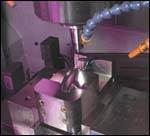
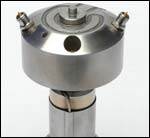


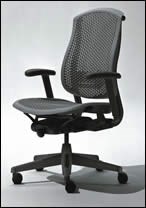















.jpg;maxWidth=300;quality=90)


